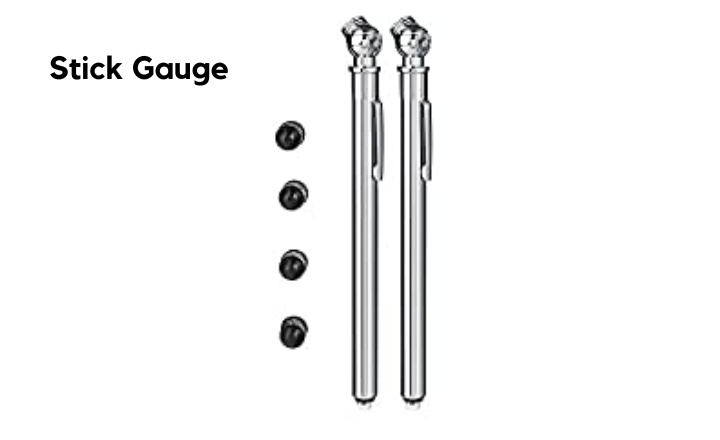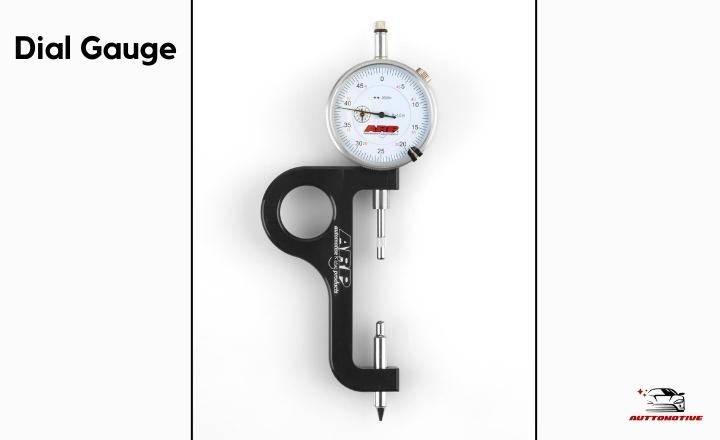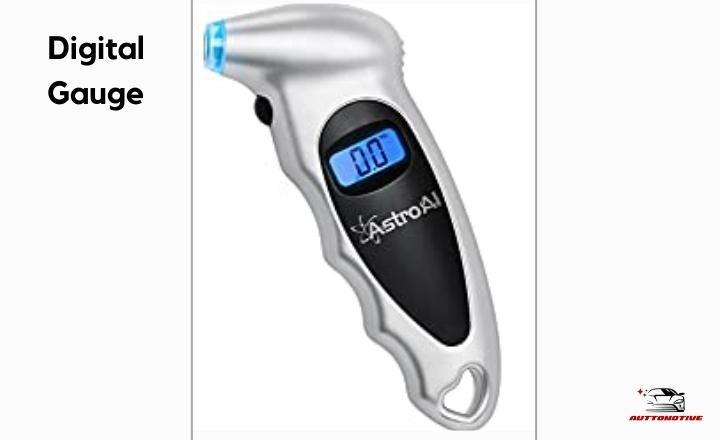Many drivers are unaware that nitrogen is often used to fill the tires of cars, trucks, and other vehicles. The idea behind this is that it helps to keep the tire pressure stable for longer periods and minimize fluctuations due to temperature changes. However, even with nitrogen, it’s important to check your tire pressure regularly and ensure they’re correctly inflated. So, “How to Check Nitrogen Tire Pressure”?

Filling tires with nitrogen instead of compressed air offers several advantages, including improved gas mileage, reduced uneven tread wear, and extended tire life. These benefits are possible because nitrogen is a dry, inert gas that is less likely to escape from the tire than regular air. The key to getting the most out of nitrogen-filled tires is checking and maintaining the pressure regularly.
How to Check Nitrogen Tire Pressure
With nitrogen, it can be challenging to determine if your tires are evenly inflated or not. Fortunately, with a few simple steps, you can learn how to check nitrogen tire pressure and ensure that your tires are always properly balanced.
Find vehicles recommended tire pressure
To determine the recommended nitrogen tire pressure for your vehicle, start by checking the owner’s manual or inside the driver’s side doorjamb for information on how much pressure should be in each tire. Use a tire gauge to check each tire’s current pressure and compare it to the recommended amount. If any tires are low, add nitrogen until they reach the correct level.
It’s important to note that overinflating your tires can be just as dangerous as underinflating them. Too much nitrogen in your tires can cause them to wear unevenly, leading to decreased handling and decreased braking performance.
Remove the valve cap from the tire
Now you will need to unscrew and remove the valve cap from one of your tires. This can be done using a valve stem tool or by simply twisting it off with your fingers. Once the valve cap has been removed, you are ready to check the tire pressure.

Connect the Gauge to the Tire’s Valve Stem for pressure
After doing the above step, you need a specialized gauge designed to measure nitrogen inflation levels accurately. Once you have the gauge in hand, connect the inflow valve to the tire’s valve stem by matching up the threads on both ends and screwing them together tightly. This will allow air from the tire to flow into the gauge so that you can get an accurate reading.
When connecting your inflow valve to your tire’s valve stem, ensure everything is snugly fitted together without any leaks or gaps.
Check Tire Pressure for current Nitrogen Inflation
To make sure you are getting the most out of your nitrogen-filled tires, it’s important to note the current inflation level regularly. This will help ensure that your tires are properly inflated and operating at peak efficiency. Checking tire pressure is easy and can be done with a simple gauge or at most gas stations.
Keeping your tires at the correct inflation level not only prolongs their lifespan but also enhances fuel efficiency by reducing rolling resistance. Not to mention, it contributes to safer driving conditions as underinflated or overinflated tires can lead to an increased risk of accidents on the road.
The three most common types of gauges used by drivers are the stick gauge, dial gauge, and digital gauge.
- The stick gauge is simple and easy to use. It consists of a pen-like shape with a sliding indicator that measures the air pressure level when inserted into the valve stem. To read it correctly, you need to remove the valve stem cap and press the tip firmly onto it until you hear a hissing sound indicating air loss has stopped. Then pull out quickly, look at where the indicator stops on its scale, and compare it with recommended psi levels.

- The second type is a dial gauge. This type of gauge features a round face with a needle that moves as air is added or removed from the tire. The dial gauge, on the other hand, requires a bit more effort to read correctly. You’ll need to connect it to your tire’s valve stem and wait for the needle on the display face to settle into a specific spot before you can determine your tire pressure accurately. This type of gauge tends to be more sensitive than other types, so you must take note of any slight changes in needle movement as well.

- In a digital gauge, all you need to do is turn on the device and place it over the valve stem of your tire. The display will instantly show you what your tire pressure reading is. Digital gauges feature an LCD screen that displays the current pressure reading in PSI or BAR units.

Remove the Gauge From The Tire’s Valve Stem
This can be achieved by pressing down on the valve stem until you hear a hissing sound. Then release the gauge from the valve stem by pulling it outwards with a firm grip. It’s important to ensure that no air escapes during this process since this could lead to inaccurate results. Once you’ve disconnected the gauge from the valve stem, you can proceed with reading its value.
Add Nitrogen for Low Tire Pressure
According to research, underinflated tires can reduce fuel efficiency by up to 3%, cause premature tire wear, and affect your vehicle’s handling and braking ability. The recommended tire pressure for your vehicle can be found in the owner’s manual or on a sticker located on the driver’s side door jamb.
If you find that your tire pressure is more than 1.0 psi lower than recommended, it is essential to top off with more nitrogen. Nitrogen is a preferred option because it does not expand as much as regular air with temperature changes, resulting in more stable tire pressures over time. You can take your vehicle to a professional or do it yourself using a nitrogen inflation system.
Fortunately, topping off your tires with nitrogen is an easy process that takes only a few minutes.
Replace Valve Stem Cap
Once you have achieved the correct pressure, it’s crucial to replace the cap on the valve stem. The cap helps protect the valve core from dirt, debris, and moisture that can cause corrosion or damage. Without a cap in place, you risk losing air pressure due to leaks or even having a damaged valve stem.
To ensure that the cap is securely fastened onto the valve stem, turn it clockwise until you feel resistance. Continue turning until it’s tightly threaded shut. Avoid over-tightening as this can lead to difficulties removing the cap in future tire maintenance checks.
At the End
Learning how to check nitrogen tire pressure of your vehicle is a great way to ensure that the tires are in optimal condition. It is important to check the pressure regularly and to perform regular maintenance, such as alignments and rotations, as recommended by your vehicle’s manufacturer. If you lack the knowledge or tools to check your tire pressure, enlisting help from a mechanic or auto shop can provide peace of mind.
FAQs
Is nitrogen inflation more ecologically friendly?
Yes, nitrogen inflation is more ecologically friendly than air inflation. Nitrogen is an inert gas and does not react with other substances, which makes it a cleaner choice for inflating tires.
Is it safe to use nitrogen inflation?
Yes, it is safe to use nitrogen inflation. Nitrogen molecules are larger than oxygen molecules, so they leak out of tires more slowly than oxygen molecules. This means that tires inflated with nitrogen maintain their pressure longer than those filled with air.
How can I check my tire pressure without a checker?
The best way to accurately measure tire pressure is with a tire pressure gauge. If you don’t have one, you can use the “thumb test” to get an approximate measurement. Another option is to look at your tires while they are still inflated and see if they appear flat or bulging in any area.

